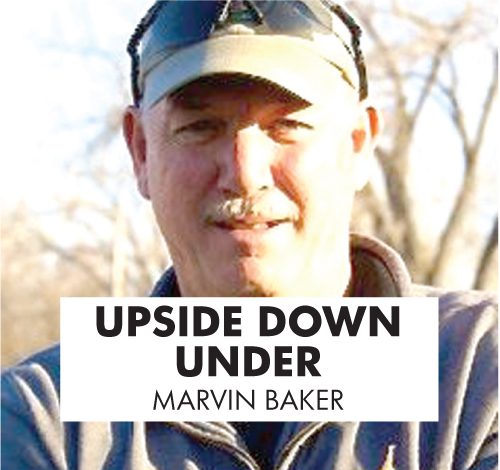Last week we summarized several ghost towns across the state. This week we’ll switch it up and take a look at North Dakota’s 10 newest communities.
Six of them are either suburbs of Fargo or are nearby. Four are independent communities in western North Dakota.
1.) Oxbow 1988 – This is clearly the newest community in North Dakota. It was incorporated as a city in 1988 and sits 15 miles south of Fargo in Cass County. The 2020 population of Oxbow was 381, which is up 75 since the 2010 Census.
2.) Reile’s Acres 1977 – Again, located in Cass County, this is considered a suburb of the city of Fargo and had 703 residents in the 2020 Census. It was incorporated as a city in February 1977 by the Cass County Commission. Becoming a city surfaced when the development of Reile’s Acres, just north of Fargo, reached a point in which the township could no longer handle road maintenance. Thus incorporation would bring some state and federal taxation to help pay for maintenance.
3.) Lincoln 1977 – This is the second largest of North Dakota’s newest communities and is located in Burleigh County and is considered a suburb of the city of Bismarck, situated just to the southeast of the city and Bismarck’s airport. In 2020, Lincoln had a population of 4,257 making it the 14th largest city in the state. In 2010 its population was 2,406.
Lincoln has seen robust growth since 1980 and as the population continues to push toward 5,000, new businesses are popping up. Regardless, most residents commute to Bismarck and Mandan to work.
Numerous people have relocated from Mott to Lincoln and some of the locals say that there are more people from Mott living in Lincoln than live in Mott.
4.) Prairie Rose 1975 – Ironically, this is not the smallest of the newest communities which is an enclave suburb of the city of Fargo. The 2020 Census showed a population of 56, which is down from 73 in 2010. In 1996 there was an effort to merge Prairie Rose with Fargo, but the local residents voted against the merger. There are currently 21 homes in the city.
5.) Briarwood 1973 – Briarwood’s most recent population was 57 and is a suburb directly adjacent to the city of Fargo. Historically, the population has been shrinking. After an uptick from 1980 to 1990, it has steadily declined in population and now has an estimated 2023 population of 52, making it one of the smallest communities in the entire state.
6.) North River 1973 – In the last census, North River had the smallest population of any of the newest communities with 55 people. It sits along the Red River just to the north of Fargo and is considered a suburb/bedroom community of the city of Fargo. In fact, it shares the 58102 zipe code with Fargo and Reile’s Acres. It is also the smallest new community in size, taking up less than a square mile of property.
7.) Kindred 1949 – This community, also in Cass County, has a different story than the rest. It was actually started in 1881 with a post office after the railroad platted the community in 1880. However, it didn’t become incorporated as a city in North Dakota until 1949. Kindred is a bedroom community of Fargo and is 25 miles southwest of the city of Fargo. The 2020 population was 889.
Kindred has been in the news recently because of several state high school championship teams that included girls basketball, boys basketball and football.
8.) Riverdale 1946 – This community in McLean County sprang up in 1946 mostly because of camps being housed to build the Garrison Dam immediately west of the city. When Garrison Dam was completed in 1953, residents of other camps moved to Riverdale, helping the local population slightly.
It was operated by the federal government until 1986 and at that time was turned over to the state of North Dakota. Its population had been declining for 30 years until 2020 when it rose 9 percent to 223. The area is also a major recreation area because of the Garrison Dam and Missouri River. Pick City lies immediately across the dam to the west.
9.) New Town 1950 – There is a lot of local lore on how New Town got started, but was created because of the flood waters of the Garrison Dam. The community was platted in 1950 as a “new town” for residents of Sanish and Van Hook, both communities flooded by the dam. Other communities; Elbowoods, Lucky Mound, Shell Creek, Nishu, Charging Eagle, Beaver Creek, Red Butte and Independence were also dissolved because of the dam and people relocated to a new site above the water and flood line.
New Town is in Mountrail County and is also on the Fort Berthold Reservation. It is the largest city on the reserva-tion and is the 18th largest community in North Dakota with 2,800 residents. It has seen robust growth since 2000, mainly because of oil nearby. It also has outdoor recreation and is home to 4 Bears Casino and Lodge.
10.) Watford City 1914 – This community has quite a story. in 2010, Watford City had a population of 1,700, which is about the size of many county seats across the state. By 2020, the population had increased 256 percent and was officially listed at 6,207 residents. But, that’s only part of the story because in 2015 and 2016, the city had unofficially reached 12,000 for a short time. It is now the 13th largest city in the state
Watford City is in the middle of oil country and activity was incredible, pushing the population to a point that some original residents didn’t recognize their home town.
It was founded in 1914, becoming the McKenzie County seat after the coming of the railroad caused neighboring Schafer to lose population and eventually the county seat. Schafer later became a ghost town and is now getting some renewed interest because of a movie called “End of the Rope,” about a local farmhand who killed a Schafer family.












